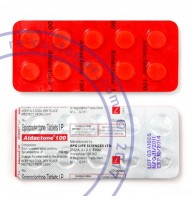Spironolactone, when used for treating acne, can have a range of effects on a woman's body due to its hormonal influences. As an anti-androgen medication, spironolactone targets and blocks androgens, which are male hormones present in both men and women. By doing so, it reduces sebum production and can help alleviate acne, particularly in cases linked to hormonal imbalances such as polycystic ovary syndrome (PCOS) or cyclical hormonal changes.
The medication can be effective, but it also comes with potential side effects. Common side effects include menstrual irregularities, breast tenderness, and dizziness. Some women might experience fatigue or headache. One of the more serious risks is hyperkalemia, which is an elevated potassium level in the blood due to spironolactone’s potassium-sparing properties. This condition requires regular monitoring through blood tests to ensure potassium levels remain within a safe range.
Regarding dosage, a typical starting dose for treating acne is usually around 50 to 100 milligrams daily. Some women may find that their acne improves with this lower dose. A dose of 200 milligrams per day, such as taking two 100-milligram tablets, is sometimes used but should only be done under strict medical supervision. This higher dosage might be necessary for some individuals if their acne is severe or if a lower dose is not effective. However, increasing the dose also raises the risk of side effects, especially concerning potassium levels.
It's crucial for anyone considering or currently using spironolactone to have regular check-ups with their healthcare provider. The provider will monitor for any adverse effects and adjust the dosage as needed. Additionally, effective contraception is necessary while on spironolactone due to its potential risks during pregnancy.
In summary, while spironolactone can be effective for acne treatment, especially when hormonal imbalances are involved, it is essential to follow medical advice regarding dosage and monitor for side effects. Taking 200 milligrams daily can be safe for some, but this should be personalized based on individual health conditions and response to the medication., when used for treating acne, can have a range of effects on a woman's body due to its hormonal influences. As an anti-androgen medication, spironolactone targets and blocks androgens, which are male hormones present in both men and women. By doing so, it reduces sebum production and can help alleviate acne, particularly in cases linked to hormonal imbalances such as polycystic ovary syndrome (PCOS) or cyclical hormonal changes.
The medication can be effective, but it also comes with potential side effects. Common side effects include menstrual irregularities, breast tenderness, and dizziness. Some women might experience fatigue or headache. One of the more serious risks is hyperkalemia, which is an elevated potassium level in the blood due to spironolactone’s potassium-sparing properties. This condition requires regular monitoring through blood tests to ensure potassium levels remain within a safe range.
Regarding dosage, a typical starting dose for treating acne is usually around 50 to 100 milligrams daily. Some women may find that their acne improves with this lower dose. A dose of 200 milligrams per day, such as taking two 100-milligram tablets, is sometimes used but should only be done under strict medical supervision. This higher dosage might be necessary for some individuals if their acne is severe or if a lower dose is not effective. However, increasing the dose also raises the risk of side effects, especially concerning potassium levels.
It's crucial for anyone considering or currently using spironolactone to have regular check-ups with their healthcare provider. The provider will monitor for any adverse effects and adjust the dosage as needed. Additionally, effective contraception is necessary while on spironolactone due to its potential risks during pregnancy.
In summary, while spironolactone can be effective for acne treatment, especially when hormonal imbalances are involved, it is essential to follow medical advice regarding dosage and monitor for side effects. Taking 200 milligrams daily can be safe for some, but this should be personalized based on individual health conditions and response to the medication.

